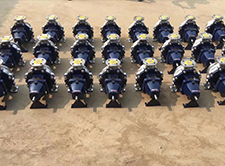English
- Afrikaans
- Albanian
- Amharic
- Arabic
- Armenian
- Azerbaijani
- Basque
- Belarusian
- Bengali
- Bosnian
- Bulgarian
- Catalan
- Cebuano
- Corsican
- Croatian
- Czech
- Danish
- Dutch
- English
- Esperanto
- Estonian
- Finnish
- French
- Frisian
- Galician
- Georgian
- German
- Greek
- Gujarati
- Haitian Creole
- hausa
- hawaiian
- Hebrew
- Hindi
- Miao
- Hungarian
- Icelandic
- igbo
- Indonesian
- irish
- Italian
- Japanese
- Javanese
- Kannada
- kazakh
- Khmer
- Rwandese
- Korean
- Kurdish
- Kyrgyz
- Lao
- Latin
- Latvian
- Lithuanian
- Luxembourgish
- Macedonian
- Malgashi
- Malay
- Malayalam
- Maltese
- Maori
- Marathi
- Mongolian
- Myanmar
- Nepali
- Norwegian
- Norwegian
- Occitan
- Pashto
- Persian
- Polish
- Portuguese
- Punjabi
- Romanian
- Russian
- Samoan
- Scottish Gaelic
- Serbian
- Sesotho
- Shona
- Sindhi
- Sinhala
- Slovak
- Slovenian
- Somali
- Spanish
- Sundanese
- Swahili
- Swedish
- Tagalog
- Tajik
- Tamil
- Tatar
- Telugu
- Thai
- Turkish
- Turkmen
- Ukrainian
- Urdu
- Uighur
- Uzbek
- Vietnamese
- Welsh
- Bantu
- Yiddish
- Yoruba
- Zulu
Telephone: +86 13120555503
Email: frank@cypump.com
Oct . 06, 2024 00:44 Back to list
septic systems with pumps
Understanding Septic Systems with Pumps An Overview
Septic systems play a critical role in managing wastewater, especially in rural or suburban areas where centralized sewer systems are not available. These systems are designed to treat and dispose of household sewage effectively. Among the various types of septic systems, those equipped with pumps offer unique advantages, particularly in challenging terrain or where gravity drainage is insufficient.
A typical septic system consists of a septic tank and a drain field. The septic tank collects and separates solids from wastewater, allowing treatment to occur before the effluent moves into the drain field for further purification through soil absorption. However, in certain locations, such as those with high water tables or sloping land, passive gravity flow may not be sufficient for effective wastewater disposal. This is where pump-assisted septic systems come into play.
Pump systems enhance the functionality of traditional septic systems by actively moving wastewater through the system when gravity alone is inadequate. A submersible or effluent pump is installed in the septic tank or an intermediary chamber. When the wastewater reaches a predetermined level, the pump is activated, pushing the effluent to the drain field or a more appropriate disposal site. This mechanism not only optimizes the use of the land but also improves the overall efficiency of sewage treatment.
septic systems with pumps

One significant benefit of using a septic system with a pump is its adaptability to various geographical conditions. When building a home on a slope, for example, traditional gravity-fed systems can be problematic. Pump systems allow homeowners to effectively manage their waste, regardless of topography. Additionally, these systems can be designed to service multiple structures, making them ideal for developments or communities where centralized wastewater management is impractical.
Despite their advantages, septic systems with pumps require regular maintenance to ensure their longevity and proper functionality
. Homeowners must be vigilant about performing routine inspections and servicing the pump system, as failures can lead to serious health hazards and environmental concerns. Common issues include pump malfunctions, clogging, and electrical problems, all of which can disrupt sewage treatment processes.In conclusion, septic systems with pumps offer a robust solution for wastewater management in challenging landscape conditions. By actively managing sewage disposal, these systems not only protect public health but also preserve the environment. Understanding their operation and maintaining them properly is essential for any homeowner reliant on these systems to ensure efficient and effective wastewater management.
-
Horizontal Split Case Pump with GPT-4 Turbo | High Efficiency
NewsAug.01,2025
-
ISG Series Pipeline Pump - Chi Yuan Pumps | High Efficiency, Durable Design
NewsAug.01,2025
-
Advanced Flue Gas Desulfurization Pump with GPT-4 Turbo | Durable & Efficient
NewsJul.31,2025
-
ISG Series Vertical Pipeline Pump - Chi Yuan Pumps | Advanced Hydraulic Design&Durable Construction
NewsJul.31,2025
-
ISG Series Vertical Pipeline Pump - Chi Yuan Pumps | Energy Efficient & Low Noise
NewsJul.31,2025
-
pipeline pump - Chi Yuan Pumps Co., LTD.|High Efficiency&Low Noise
NewsJul.31,2025










